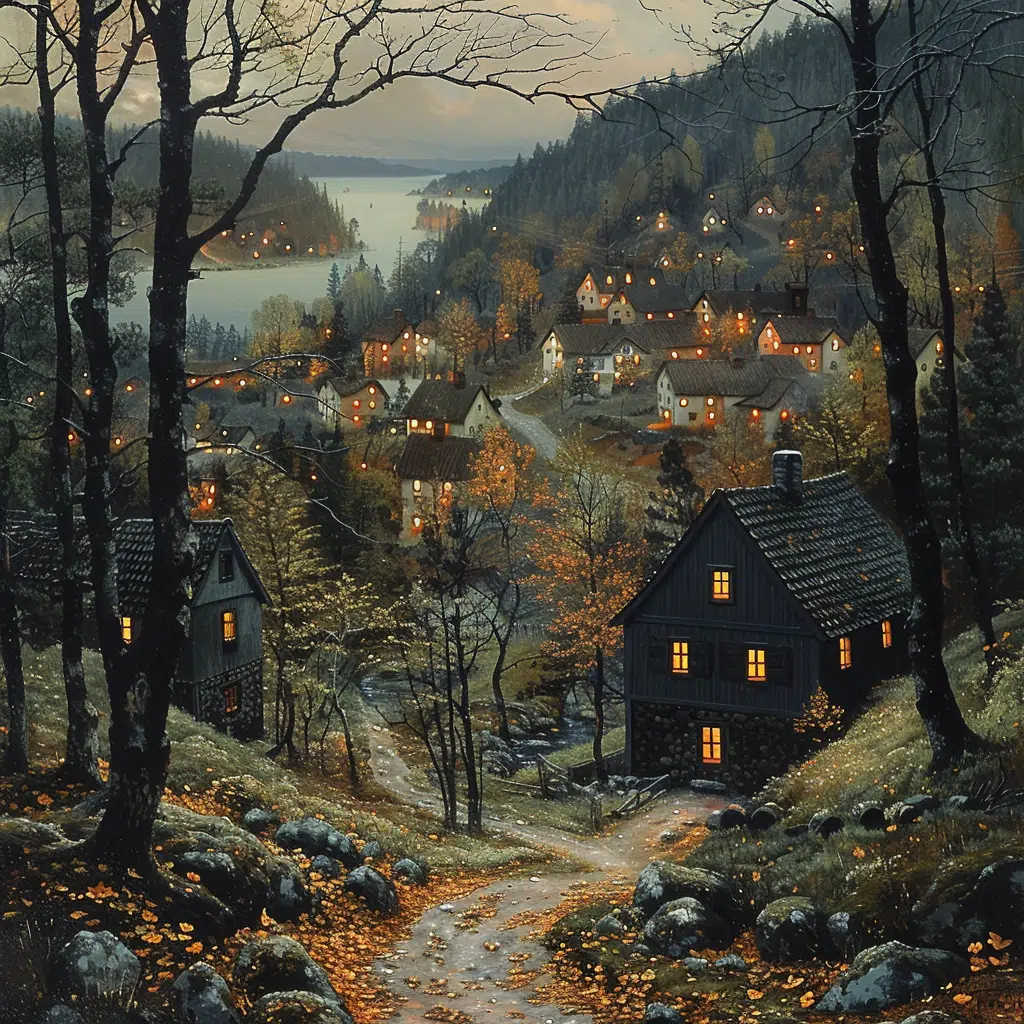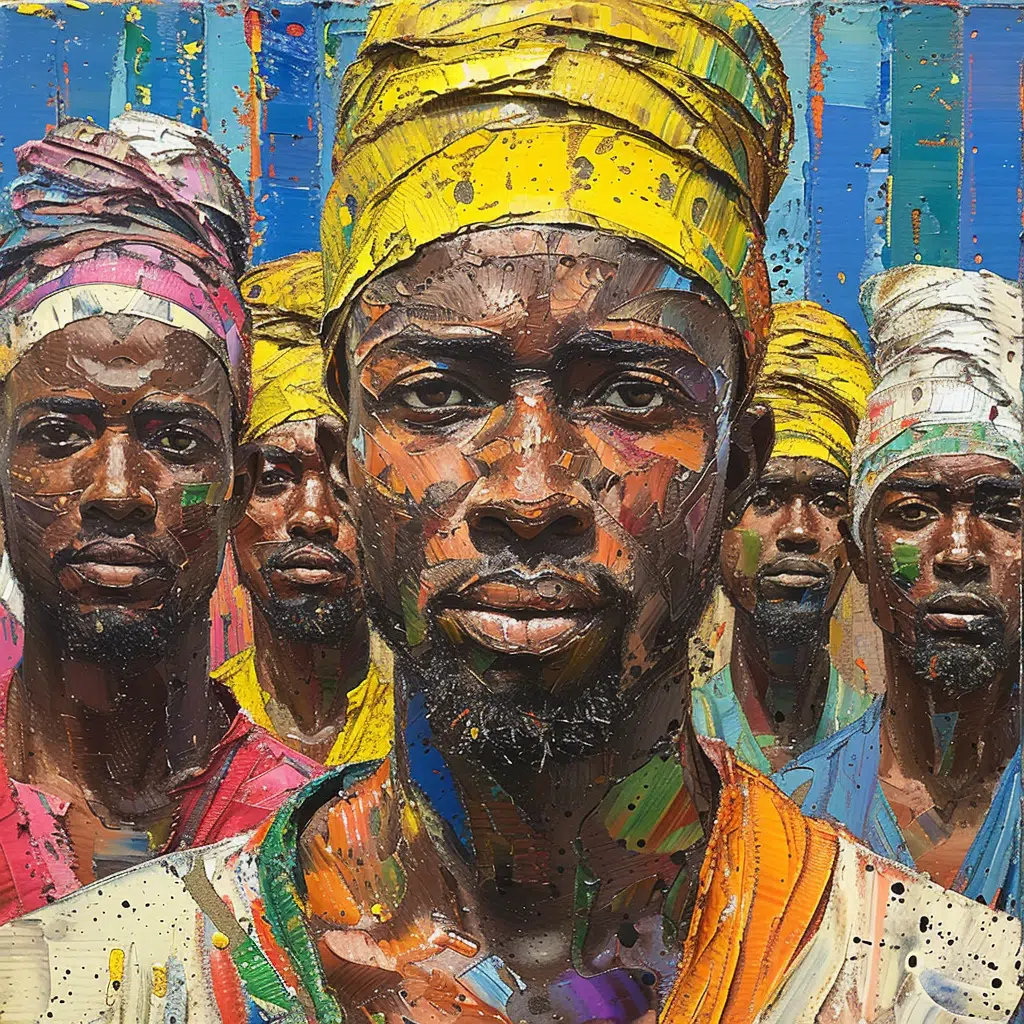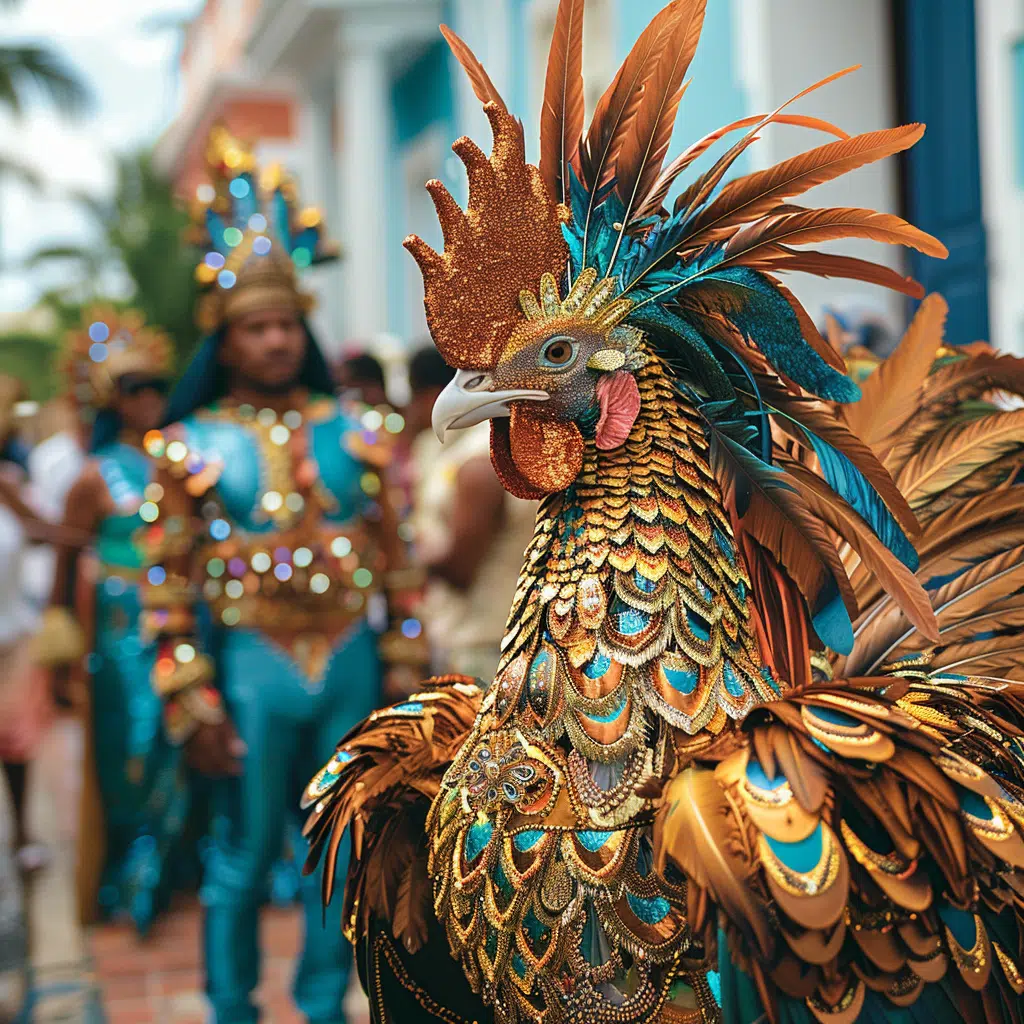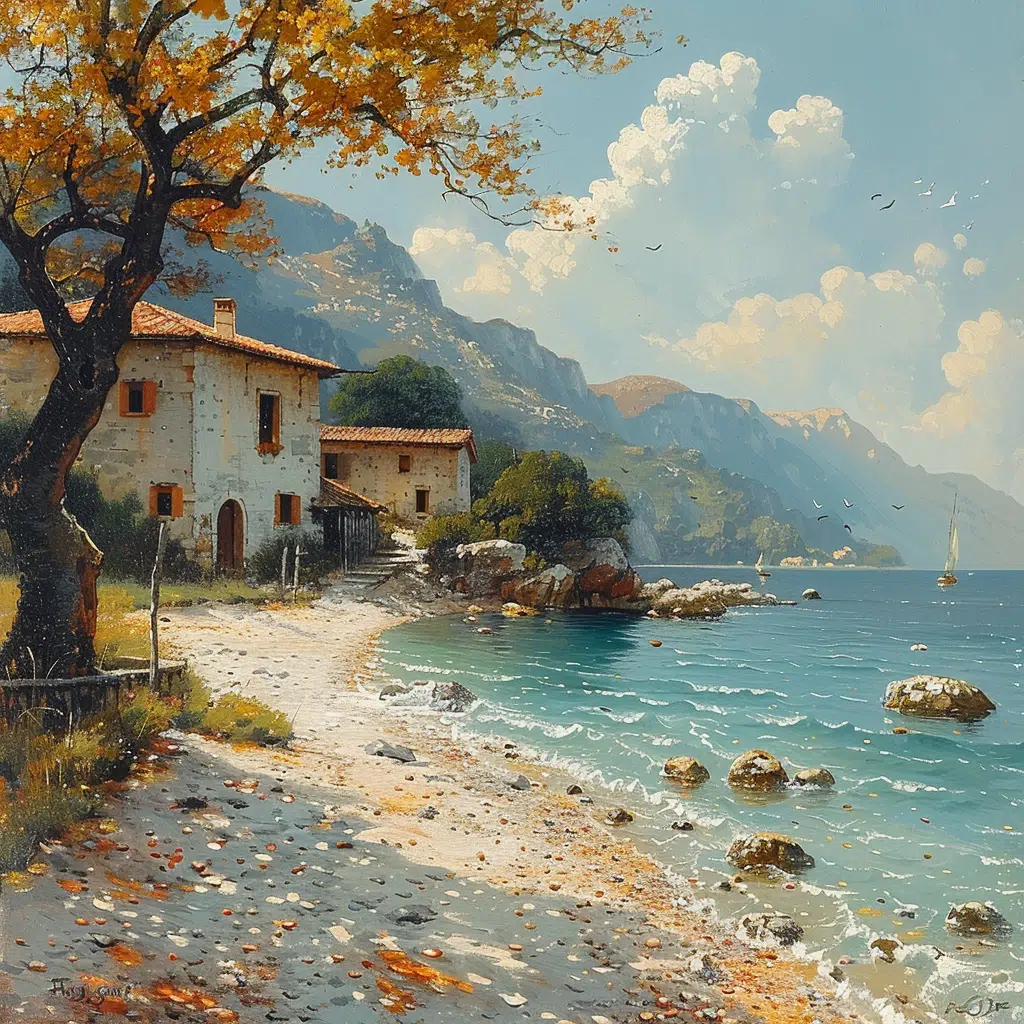Exploring the Cultural Nuances of ‘Buenas Tardes’: Beyond the Banality
Ah, the humble ‘buenas tardes’—a common greeting that rolls off the tongue as effortlessly as a casual ‘good afternoon’ in the Anglophone world. Yet, this seemingly banal phrase is anything but. Across the vibrant tapestry of Spanish-speaking countries lies a feast of cultural nuances that give this greeting its unique flair.
Now, if you’ve set foot in Mexico, whispered ‘buenas tardes’ while meandering through the bustling streets of Madrid, or exchanged this pleasantry under the Argentinian sun, you might have noticed the subtle differences in its reception. In Mexico, this greeting can be as warm as the midday sun, accompanied often by a firm handshake or even a hug. Spaniards, on the other hand, may toss a ‘buenas tardes’ across a room like a chatty paper airplane, engaging everyone in its path. As for Argentina, the greeting comes with an intimate twist—you’re quite likely to meet with a single cheek kiss as a response.
But remember, buenas tardes isn’t reserved strictly for the stroke of noon—it’s the Swiss Army knife of greetings, perfectly appropriate till the sun bows its head low. So, whether you’re sharing mate or dining tapas style, that friendly ‘buenas tardes’ is your passport to local hearts.
Buenas Tardes’: A Linguistic Exploration of What It Significa
So, what’s cooking in the linguistic kitchen with ‘buenas tardes’? Literally translating to ‘good afternoons’, it’s a festive plural that echoes the warmth and inclusivity of Hispanic culture. Historians and linguistic experts ponder over the myriad faces of this greeting, tracing its evolution through the ebb and flow of societal change.
Delving into its construction, we stumble upon grammatical elegance: ‘buenas’—a feminine plural adjective, and ‘tardes’—also feminine and plural, representing the hours post-noon. According to the Instituto Cervantes, which examines such Spanish phenomenons, ‘buenas tardes’ has held its ground with admirable loyalty through centuries. Its usage, rippling across oceans and time zones, denotes not only an afternoon greeting but a mark of respect and acknowledgment between souls crossing paths.
| Category | Details |
|---|---|
| Spanish Phrase | Buenas tardes |
| English Translation | Good afternoon |
| Time of Use (General) | From noon until sunset |
| Time of Use (Spain) | After lunchtime (even if it’s at 2 or 3 p.m.) until around 8 p.m. |
| Transitional Hours | Between 6 p.m. and 8 p.m., based on daylight and country of origin, either buenas tardes or buenas noches might be used. |
| Comparison to Other Greetings | – Buenos días: Used in the morning until lunchtime |
| – Buenas noches: Used from around 8 p.m. onward | |
| Cultural Variation | Usage can vary by country and the amount of daylight during evening hours. |
| Alternative Greetings | Hola (hello), Buenos días (good morning), Buenas noches (good evening) |
| Date of Last Observation | May 2, 2022 |
Buenas Tardes’ vs. ‘Good Afternoon’: A Cross-Cultural Comparison
Now, let’s toss ‘buenas tardes’ and ‘good afternoon’ into the ring for a friendly cultural spar. The British ‘good afternoon’ is polite, stiff-upper-lipped, and as punctual as Big Ben’s chime. In contrast, ‘buenas tardes’ comes with a side of personal touch—you’re not just acknowledging the time of day, but also the person you’re greeting.
This is not idle chatter. Take, for example, the corporate corridors of Telefónica in Spain or the boardrooms of Grupo Bimbo in Mexico. In these international business powerhouses, a well-timed ‘buenas tardes’ could be the prelude to flourishing partnerships or an olive branch in tense negotiations. It’s a token of courtesy, yes, but also a cultural handshake, bridging gaps and building bridges in the global marketplace.
The Interpersonal Dynamics of ‘Buenas Tardes’ in Social Settings
Ever paused to think about the psychological wizardry packed in a simple ‘buenas tardes’? This greeting is a secret weapon for social butterflies and a life raft for the introverts among us in uncharted social waters. Research in social psychology is clear as daylight—greetings like ‘buenas tardes’ are social glue, bonding individuals through shared cultural threads.
Imagine stepping into a lively Spanish fiesta or an Argentinian barbecue. The moment ‘buenas tardes’ leaves your lips, you’re no longer an observer; you’re a participant. A participant in a ritual that research indicates can lower defenses and invite inclusive interactions. Basically, it’s saying, “Here I am, let’s connect!”
Responding to ‘Buenas Tardes’: From the Simple ‘De Nada’ to Complex Interactions
So someone’s hit you with a ‘buenas tardes’—what’s the play? A ‘de nada’ might feel like the right volley, but hold your horses—it’s not quite that straightforward. ‘De nada’, meaning ‘you’re welcome’, may actually be a cultural faux pas here. Much like an overly enthusiastic high five at a solemn event. Oops.
Instead, think of ‘buenas tardes’ as the first move in a game of chess. Your response can define the rest of your interaction. You could mirror with a ‘buenas tardes’, or if feeling bold, throw in a ‘¿Cómo estás?’ (How are you?), inviting further dialogue. But remember, finesse is key. Timing, tone, and setting can turn this simple exchange into a complex social dance, rife with possibilities.
Buenas Tardes’ in the Digital Age: Evolving Etiquette on Digital Platforms
In the era of blue light glasses and endless scrolling, ‘buenas tardes’ has taken on new life in the digital world. On platforms like Twitter and WhatsApp, where an emoji can speak a thousand words, ‘buenas tardes’ becomes an anchor of sincerity in an ocean of memes and gifs.
But what about the formalities? Is it too old-school for a quick text? As it turns out, the phrase is resilient—adapting to the pace of our online exchanges while retaining its cultural essence. Tucked between the gifs and LOLs, ‘buenas tardes’ stays true, ensuring that even in pixel form, human warmth flickers through.
Rekindling Tradition Through ‘Buenas Tardes’: An Innovative Social Revival
In a time when old traditions might seem at odds with the rapid tempo of modern society, ‘buenas tardes’ is staging a comeback. Cultural champions such as the Sociedad General de Autores y Editores in Spain are throwing their weight behind this linguistic heritage, nurturing its ongoing relevance among youths hooked to hashtags and handles.
These efforts run deeper than mere nostalgia. It’s about weaving a thread of continuity, binding generations in a shared linguistic embrace. ‘Buenas tardes’ is both a nod to the past and a wink to the future—it’s heritage, evolving yet enduring.
Wrapping up this deep dive into ‘buenas tardes’, we’ve surfed the waves of its history, significance, and adaptation. From street corners to digital screens, this greeting transcends mere habit—it’s an enduring ornament in the lexicon. So let’s emblazon it with pride, as we affirm that a simple ‘buenas tardes’ has the power to brighten afternoons and knit the social fabric, one salutation at a time.
The Social Fabric of “Buenas Tardes”
The Melody of Afternoon Salutations
Imagine the sun dipping just a tad lower in the sky, that’s your cue to switch up the greetings—about time we say ‘buenas tardes’! But hold on, did you know that this common Spanish phrase rings a bell in the music world as well? Picture a vinyl spinning, Carole Kings soothing voice filling the room, maybe she’s singing “Buenas Tardes, Amigo. Alas, that song isn’t hers, but don’t you reckon it’d be a seamless fit on her “Tapestry” album? And while we’re at it, why not play a game to guess the next track? If you had free Robux Codes like the ones in your favorite video game, Roblox, which song would you unlock next?
Oh, and by the way, while humming to those tunes, consider this—saying ‘buenas tardes’ could be as strategic as choosing when to jump into the housing market. Just as interest rates For Homes fluctuate throughout the day, so does the appropriateness of this greeting. You wouldn’t say ‘good evening’ at noon, right? Timing, whether in greeting or in getting a mortgage, is everything.
Twist of Language and Culture
Now, let’s twist our way through the cultures of the world with ‘buenas tardes’ on our lips. Did you ever catch a compelling performance by the formidable Željko ivanek and think to yourself that his delivery of ‘buenas tardes’ would be spot on? No? Well, next time you binge-watch a series featuring this talent, one can’t help but ponder on Željko Ivanek’s( mastery of dialects and imagine it. And as a cheeky aside, if you’re tracking the time spent marveling at his performances, perhaps you’re glancing at your Gabb watch, the kid-friendly tech that helps you greet the afternoon responsibly.
Lastly, before we wrap up our afternoon banter—buenas tardes, by the by—let’s acknowledge the other stories making waves. Don’t get carried away now, but there’s been buzz about a shooting in Maine and let’s have a moment of appreciation for the journalists who bring such stories to light. It’s an ever-spinning reel, much like how ‘buenas tardes’ rolls off the tongue across diverse Spanish-speaking communities. Speaking of reels, Jess Gabor might just be your next afternoon movie pick. The rising star’s filmography is as engaging as a heartfelt ‘buenas tardes’ itself; take a peek and see if Jess Gabor( has a feature that’s perfect for your post-meridian relaxation.
What is the meaning of Buenas tardes?
Well, ‘Buenas tardes’ is your go-to Spanish phrase when you’re saying “good afternoon.” It’s the perfect icebreaker when the sun’s hanging above but hasn’t kissed the horizon goodbye just yet. It fits snugly any time after the midday frenzy, around noon, and sticks around until evening starts to creep in.
Is it Buenas Noches or tardes?
Now, this could throw you for a loop—should you be classy and say ‘Buenas noches,’ or keep it breezy with ‘Buenas tardes’? The trick is all in the timing. Once the clock chimes past around 8 PM, it’s time to switch gears to ‘Buenas noches’ to match the starry sky!
Is Buenas tardes correct?
Absolutely, ‘Buenas tardes’ is spot on if you’re looking to say “good afternoon” in Spanish. It’s like a warm, sunny handshake in word form, filling that time slot from just after the lunch hour to when the day starts chilling out.
Is Buenas tardes good afternoon or evening?
Hang tight—’Buenas tardes’ is not just a pretty face; it doubles as both “good afternoon” and an early “good evening.” So, think of it as your afternoon-to-sunset chameleon greeting.
How do you reply to Buenas tardes?
Alright, someone hits you with a ‘Buenas tardes’? It’s easy peasy to hit back with a friendly ‘¡Buenas tardes!’ right back at ’em. But hey, mixing it up with a ‘Hola’ or ‘¿Cómo estás?’ can add a sprinkle of variety.
What time do you stop saying Buenas tardes?
Like Cinderella ditching the ball, you stop saying ‘Buenas tardes’ when the clock nudges at sunset. It’s that magical time when day waves goodbye, and night flirts its way in, so roughly between 6 PM and 8 PM it’s transition time. The exact time to swap greetings can depend on how much daylight’s left in the tank.
What does hasta luego mean?
Hold up, ‘hasta luego’ doesn’t mean you’re done for good—it’s your casual ‘see you later!’ Perfect when you’re bouncing from a convo but you’re not saying bye-bye for eternity.
Why is Buenas tardes feminine?
Here’s the skinny: in Spanish, words gotta tango with the gender dance, and ‘tardes’ happens to be a lady. ‘Buenas,’ the adjective, agrees with the feminine ‘tardes,’ so they’re strutting down Spanish street hand in hand.
What is the meaning of Mucho Gusto?
Well, ‘Mucho Gusto’ rolls off the tongue like ‘pleased to meet you,’ with that dash of personal warmth. It’s the business card of greetings you’d give when your paths cross for the first time.
How do you respond to Mucho Gusto?
Someone throws you a ‘Mucho Gusto’? Toss back another ‘Mucho Gusto’ like a friendly echo, or play it coy with a ‘Igualmente’ (likewise). It’s all about keeping the meet-and-greet good vibes rolling.
What should I reply to Hola?
‘Ola.’ Wait, no – ‘¡Hola!’ Go with the crowd-pleaser when someone springs a ‘Hola’ on you, or jazz it up with a sparkly ‘¡Hola! ¿Cómo estás?’ to show you’re not just about the hello, but the follow-up, too!
Do girls say buenos or buenas?
Listen up, ladies and gents: it’s ‘buenas’ for pretty much everyone—no need to fret over ‘buenos’ or ‘buenas.’ You’re playing by the rules since most of the time words like ‘tardes,’ ‘días,’ and ‘noches’ fancy themselves as feminine.
Is Buenas tardes a goodbye?
Whoa there, don’t get ahead of yourself—’Buenas tardes’ isn’t waving the goodbye flag, it’s more ‘hey there, sunshine’ while the sun’s still clocking in for the day.
Can you say buenos días all day?
Nah, you can’t stretch ‘buenos días’ like your fave comfy pants throughout the day—once you hit that noon marker, it’s time to swap to ‘buenas tardes.’
Why is Buenas tardes plural?
‘Buenas tardes’ is just flaunting its Spanish flair—going for the plural form to match the plural goodness of those afternoon hours. It’s like giving you a double scoop of cheer!
Can you say Buenas tardes as a goodbye?
For sure, you can trot out ‘Buenas tardes’ as a sunny sendoff when the afternoon’s still doing its thing. It’s not just a hello—it can wave goodbye when daylight’s still your partner in crime.
What are the two meanings of Buenas noches?
Jeez, ‘Buenas noches’ sure is a double agent! It clocks in for “good evening” duties, all smooth and suave, then clocks out as “good night” when bedtime stories are calling.
What does Buenas tardes señora mean?
Picture this: ‘Buenas tardes señora’ is your respectful nod—like tipping your hat—when you greet a lady in the lush glow of the afternoon. It’s all class and courtesy.
Why is it buenos dias and buenas tardes?
Here’s a head scratcher: why is it mixed up with ‘buenos dias‘ and ‘buenas tardes’? Well, ‘días’ breaks the norm and struts around as masculine, so it swings with ‘buenos,’ while ‘tardes’ is one of the gals, so it pairs up with ‘buenas.’ Go figure—it’s the Spanish spice of life!
























